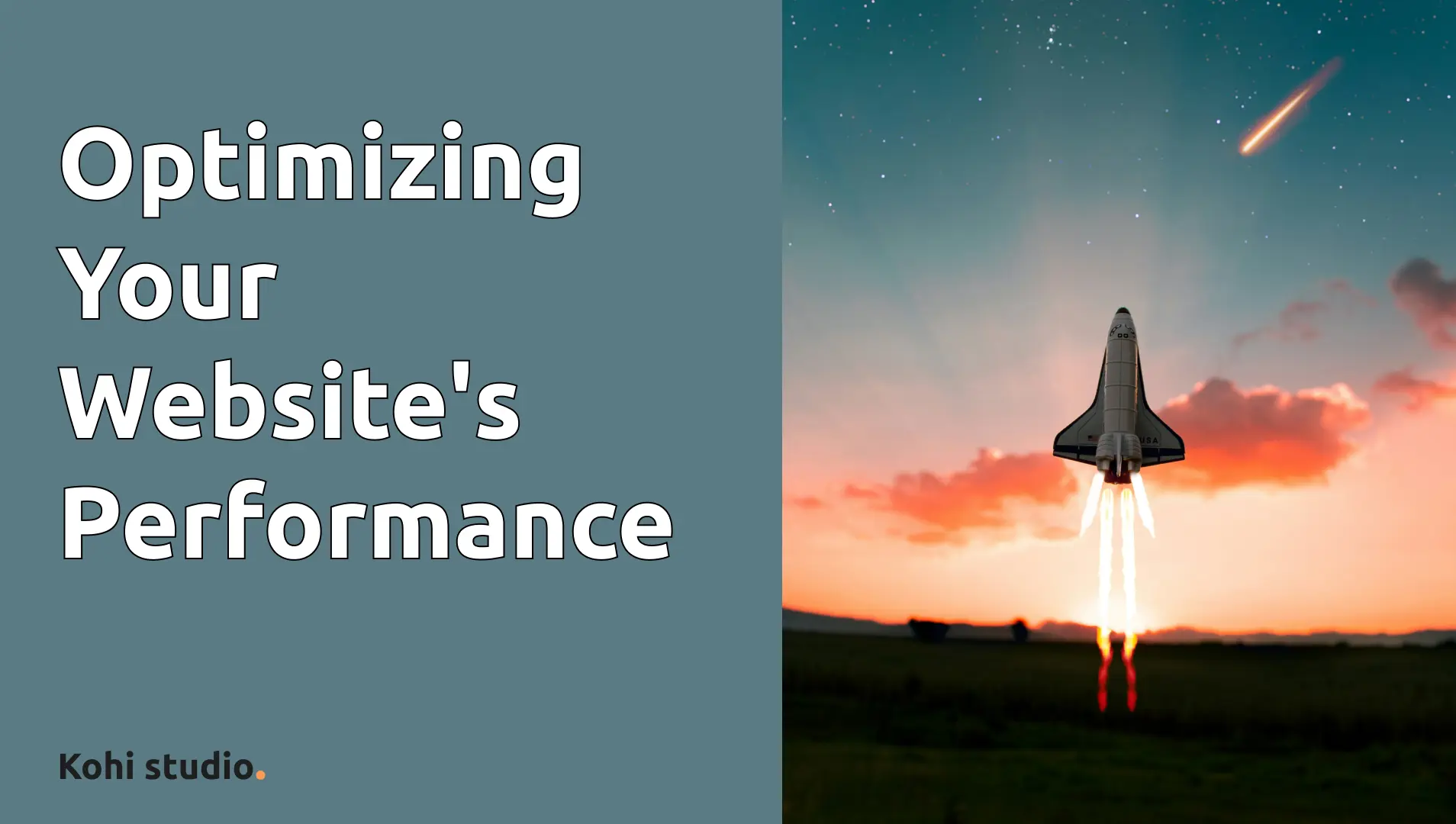
Understanding and Optimizing Your Website's Performance
- Kohi studio
- Website , Tips
- 14 Jan, 2024
Introduction
In the digital era, just as slow service can impact a restaurant’s reputation, slow site speed can significantly affect a website’s performance, user experience, and search engine rankings. In this blog post, we will delve into the importance of site speed, its impact on conversion rates, bounce rates, and SEO, as well as factors that influence site speed.
Site Speed and Its Significance
Site speed, or website performance, measures how quickly a browser can load fully functional webpages from a given site. A fast-loading website not only ensures positive user experiences but also contributes to higher search engine rankings, increased traffic, and better conversion rates.
1. Conversion Rate
Several studies highlight the direct correlation between site speed and conversion rates. Even a small improvement in page load time can lead to a significant uptick in session-based conversions. Companies like Mobify, AutoAnything, and Walmart have reported increased conversions by optimizing their page load times, emphasizing the importance of site performance in conversion rate optimization.
2. Bounce Rate
The bounce rate, representing the percentage of users who leave a website after viewing only one page, is heavily influenced by site speed. Users are more likely to abandon a site if pages do not load within a few seconds. BBC’s experience showcases that every additional second of page load time resulted in a 10% loss of total users.
3. SEO Best Practices
Google prioritizes delivering relevant information quickly, making site performance a crucial factor in search engine rankings. With mobile devices playing a pivotal role, optimizing site speed for mobile users is particularly essential for effective SEO strategies.
4. User Experience
Long page load times and poor response to user actions contribute to a negative user experience. Frustrated users may leave the site, emphasizing the need for web developers to prioritize responsive design and efficient page loading.
Factors Affecting Site Speed
Understanding the factors influencing site speed is essential for effective optimization. Key elements include:
1. Page Weight
The resources a website requires to load, including JavaScript files, video content, CSS files, and images, significantly impact page load times. Keeping websites light and minimizing file sizes are crucial for faster page loading.
2. Network Conditions
Network slowness and varying ISP quality can hinder website loading. Employing techniques such as minification, compression, and CDN hosting helps deliver web resources quickly, even under slow network conditions.
3. Hosting Location
The geographical location of content hosting impacts network latency. Minimizing the distance between users and servers, especially for critical resources like HTML and CSS files, is vital for reducing load times.
Measuring Website Speed
To assess and improve site speed, organizations like Cloudflare offer website speed tests. Essential metrics include:
1. Load Time
The duration for an entire webpage to appear in the browser, encompassing all HTTP requests.
2. Page Size
The total file size of all resources needed for the page to function, influencing loading times and user experience.
3. Time To First Byte (TTFB)
The time between a browser’s request for a webpage and the arrival of the very first byte of the response.
4. Number of Round Trips
Measuring how many times a request/response travels to and from the origin server, impacting latency.
5. Round Trip Time (RTT)
The time taken for requests to make a round trip, considering the request reaching the origin server and the response returning to the user’s device.
Cloudflare and Website Acceleration
Cloudflare’s CDN plays a crucial role in speeding up websites by caching content in numerous cities worldwide. By storing content closer to end users, Cloudflare reduces latency, resulting in lower load times and improved overall website performance.
Conclusion
In a digital landscape where user expectations are high, optimizing site speed is not just a technical consideration but a strategic imperative. A faster website not only enhances user experiences but also positively influences conversion rates and search engine rankings. Cloudflare’s role as a content delivery network is pivotal in achieving optimal website performance, ensuring that users can access content quickly and seamlessly, regardless of their geographical location or network conditions.

